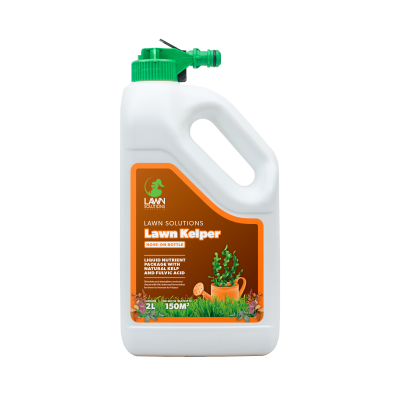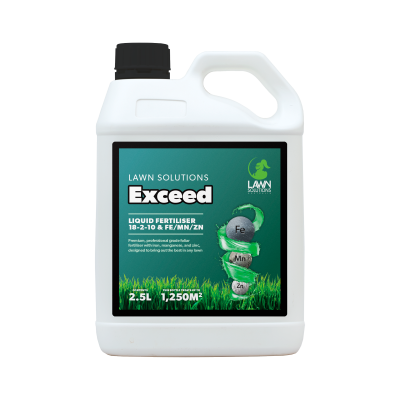Many weeds that appear in our lawns are known as broadleaf weeds. In this blog, we discuss what broadleaf weeds are, provide some common examples and explain how to treat them in your lawn.
How to Identify Broadleaf Weeds
Broadleaf weeds are a group of plants that generally have broad, flat leaves. They come in a range of sizes, shapes, and textures. These weeds are often easily distinguishable from the grass in your lawn.
Some common examples include creeping oxalis, clover, chickweed, plantain, and catsear. These weeds can look very different to each other but will have significant contrast in appearance to that of your lawn or other invading grass-type species.
First, properly identifying the weeds in your lawn is essential for selecting the appropriate treatment methods and will help ensure the products or methods used are successful.

How Do Broadleaf Weeds Invade Your Lawn?
Broadleaf weeds can invade lawns for various reasons but usually occur due to a lack of lawn care, compacted soil, or due to worn-out or thin and sparse lawns. Weeds can quickly take advantage of this weakened or thin grass, as well as areas where the grass is struggling to compete and thrive due to environmental factors like shade or poor drainage. The weeds can be brought in through rain, wind, pets and foot traffic, and will be more likely to successfully germinate if there is space to penetrate the profile of the lawn to the soil and there is space to grow.

How to Prevent Broadleaf Weeds
Preventing broadleaf weeds from invading your lawn is essential for long-term weed control.
Mowing
- Keep your lawn at the recommended height for your grass type, as taller grass shades out weed seeds, reducing their germination.
Watering
- Water deeply and less frequently to encourage deeper root growth in your grass, making it more resilient and competitive against weeds.
Fertilising
- Apply the right amount and type of fertilizer for your lawn’s needs. Healthy, well-fed grass is better equipped to compete with weeds.
Aeration
- Aerate your lawn seasonally or as required to alleviate soil compaction and improve nutrient and water absorption by the grass.
How to Eradicate Broadleaf Weeds Once they Appear
For a few scattered weeds, hand-pulling or spot-treating with a non-selective herbicide, carefully avoiding contact with the grass is a quick and easy solution. If the weeds have spread profusely or are difficult to pull out by hand, a broadleaf herbicide may be required. Broadleaf herbicides are a type of weed killer specifically designed to target and control broadleaf weeds.
There are two main types of herbicides that will help you treat these broadleaf weeds…
Post-Emergent Herbicides
Post-emergent herbicides are applied directly to the weeds, as the name suggests, after they have emerged. They are most effective on young, actively growing weeds. Post-emergent herbicides containing active ingredients like Bromoxynil and Dicamba are commonly used for broadleaf weed control.

All Purpose Weed Control is a broad-leaf herbicide containing bromoxynil, designed to control many of these broad-leaf weeds. All-purpose weed control is safe to use on all common grass varieties. Unlike many herbicides that contain Dicamba, is safe to use on buffalo grasses like Sir Walter DNA Certified as well.
Pre-Emergent Herbicides
Pre-emergent herbicides are applied to the lawn before weed seeds have a chance to germinate, so as the name suggests, before the weeds have a chance to emerge. They create a barrier in the soil, preventing weed seeds from sprouting. Pre-emergent herbicides are more effective against annual broadleaf weeds. Common active ingredients include Oxadiazon like in Oxafert, Prodiamine and Pendimethalin.


Remember to always read and follow the label instructions on any herbicide product. It is best to avoid using herbicides on windy days or during extreme heat to prevent drift and damage to non-target plants.
If you need help identifying what weeds you have, please reach out to us here at Lawn Solutions Australia or check out the Lawn Solutions Australia App. The LSA App has an extensive library of broadleaf weeds that you can utilise for identification and treatment advice.
You can download the Lawn Solutions Australia app on the App Store here and the Google Play Store here.


